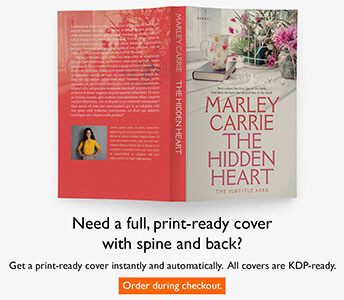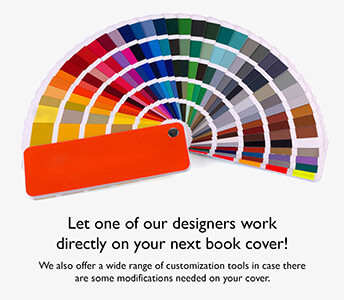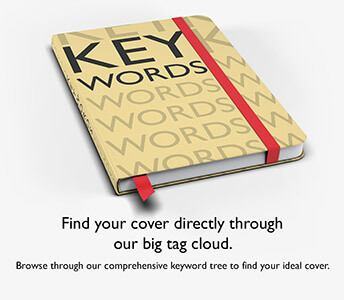First of all, what is a trim size?
Trim size is basically, the size of the book after it has gone through the binding process and has been trimmed. In other words, it’s the size of the final form of the book. To understand why it’s called a “trim size” and not just “size” or a “book size”, you will need a basic understanding of how a book is made. Once all the pages of a book have been printed on a sheet of paper, this sheet of paper is folded a few times. These folded sheets are then put together (on top of each other) to form a book block. Next, a cover is attached to the book block. Finally, the book is trimmed on all three sides for it to look smooth on all three sides. The back of the book, where the spine is, is left untouched, as this is the section that holds the book together. After all of these processes have been completed, you finally get the trim size of a book.
One of the largest book trim sizes in the world belongs to the Bhutan: A Visual Odyssey Across the Last Himalayan Kingdom by Michael Hawley, published in 2003, with a whopping size of 1.5 m × 2.1 m (5 ft × 7 ft). The smallest book, on the other side of the spectrum, is Teeny Ted from Turnip Town measuring 0.07 mm × 0.10 mm (0.0028 in × 0.0039 in). Of course, these are the extremes. Typically a book’s trim size is based on how many times a sheet of paper (that goes into the press) can be folded, by leaving as little waste paper as possible.
Trim sizes mainly depend on where in the world they are being printed.
One question that we hear a lot here at BookCoverZone is, which trim size is right for your book. There are a lot of things to consider here. Firstly it’s the geography question. European and American trim sizes vary. This is due to the fact that while the US and the UK use the imperial system and book sizes are measured in inches, continental European books (inc. Russia and Turkey) use the metric system where book sizes are in centimeters. So while a 6×9 inch book size is standard in America (correspond to 15.24 x 22.86 cm), in Europe the closest standard is 16×23 cm. Hence the first thing you should consider is whether you’re publishing your book for the European market or the American market. As you will most probably publish your book through an American service (such as Amazon KDP, Hulu, IngramSpark, etc.) you will have to go with a US standard size.
The size depends on the word count of your book
The second factor is cost-related. Printing houses and publishing services usually base their prices on the page count of a book. So naturally, you will get more text on a wider page, resulting in a slimmer book with fewer pages, making the overall cost less. On the other hand, if your word count is low you would want your book to be as thick as possible, in which case going with a smaller trim size (such as 5×8 inch) would be the better choice. Pockets books with a size of 4.25 in x 6.87 in are always popular, not just because they’re meant to fit your pocket (which they rarely do), but also because they’re pleasing to look at as they’re relatively thick (giving a “bookish” feel without being too frightening) but unfortunately these are not very widespread in the digital self-publishing industry.
What type of book are you writing?
The third factor you should consider is the genre of the book. While fiction books usually tend to go with either 5×8 or 6×9 (based on the word count), non-fiction and children’s book can have a variety of sizes -a 7.5 x 7.5 inch square book being a popular choice. If your book consists of numerous illustrations, diagrams, and pictures, the golden rule is usually the larger the better. However, a history book or a philosophy book can use the same size as fiction books. Again European and American sizes will differ, but they each have more or less some standards. Here are some standards for the US and UK market:
- Fiction: 4.25 x 6.87 (pocket book), 5 x 8, 5.25 x 8, 5.5 x 8.5, 6 x 9.
- Novella: 5 x 8.
- Children’s: 7.5 x 7.5, 7 x 10, 10 x 8.
- Textbooks: 6 x 9, 7 x 10, 8.5 x 11.
- Non-fiction: 5.5 x 8.5, 6 x 9, 7 x 10“
- Memoir: 5.25 x 8, 5.5 x 8.5.
And finally, here is a list of the trim sizes Amazon KDP offers, with their corresponding sizes in metric units:
- 5” x 8” (12.7 x 20.32 cm)
- 5.06” x 7.81” (12.9 x 19.8 cm)
- 5.25” x 8” (13.335 x 20.32 cm)
- 5.5” x 8.5” (13.97 x 21.59 cm)
- 6” x 9” (15.24 x 22.86 cm)
- 6.14” x 9.21” (15.6 x 23.4 cm)
- 6.69” x 9.61” (17 x 24.4 cm)
- 7” x 10” (17.78 x 25.4 cm)
- 7.44” x 9.69” (18.9 x 24.6 cm)
- 7.5” x 9.25” (19.1 x 23.5 cm)
- 8” x 10” (20.32 x 25.4 cm)
- 8.5” x 11” (21.59 x 27.94 cm)







